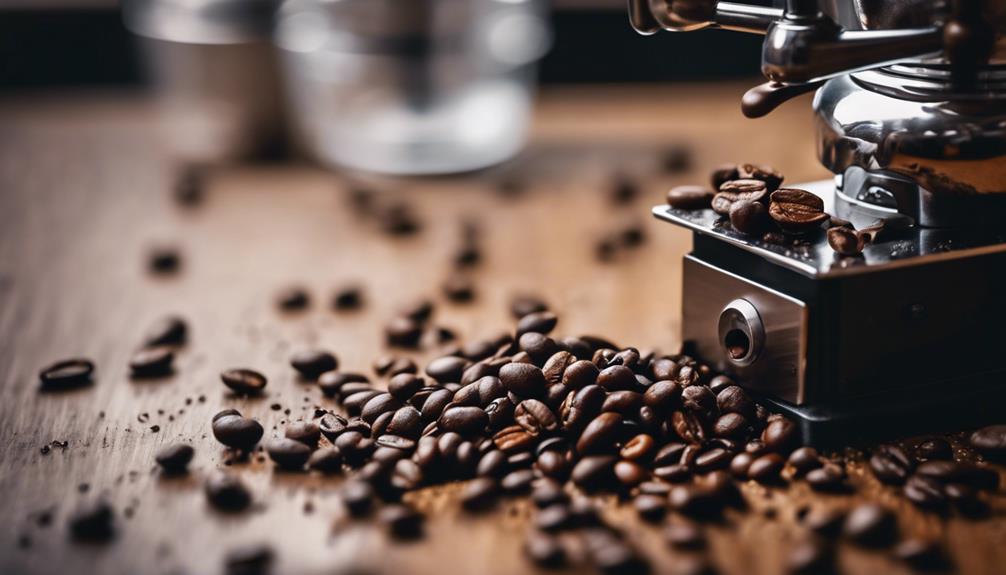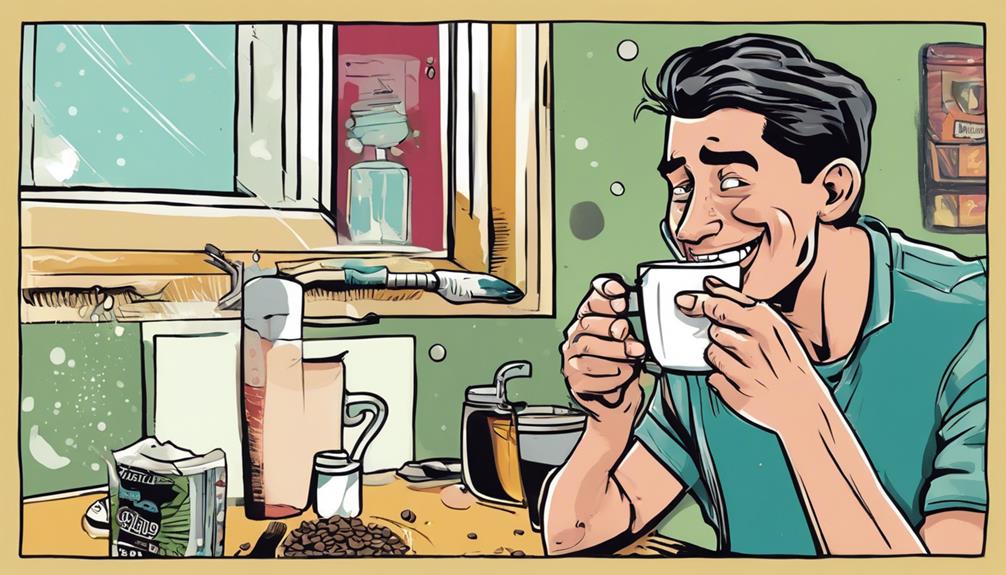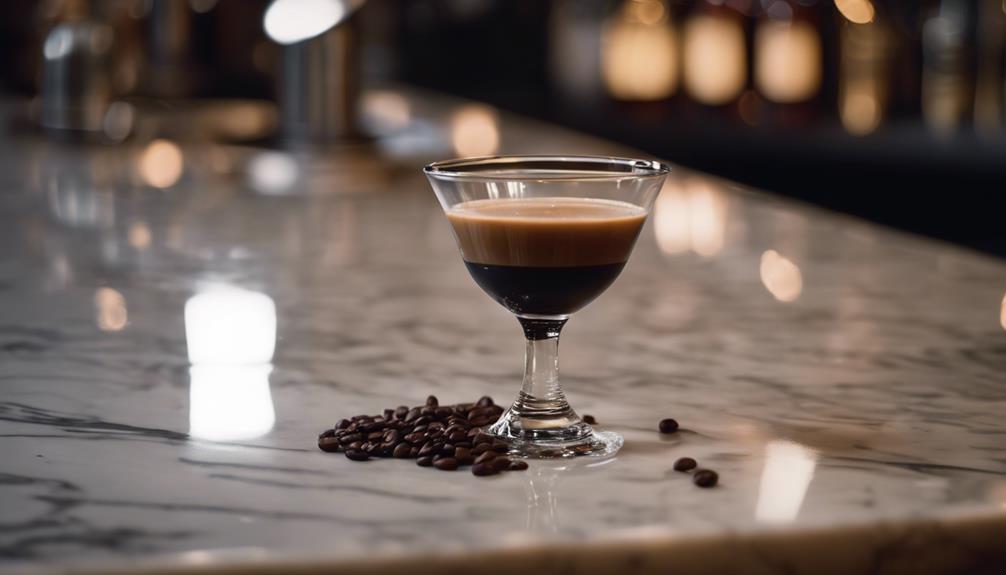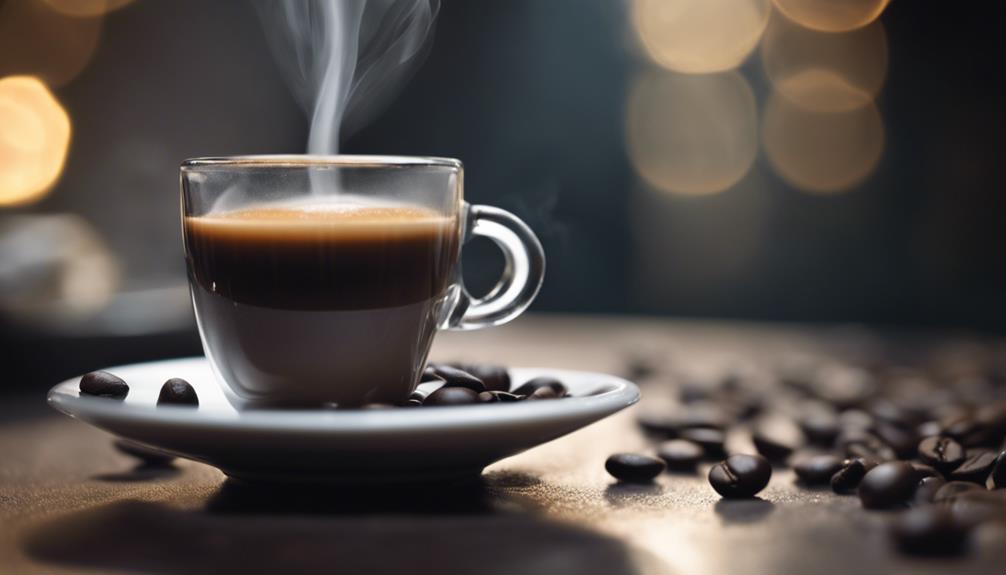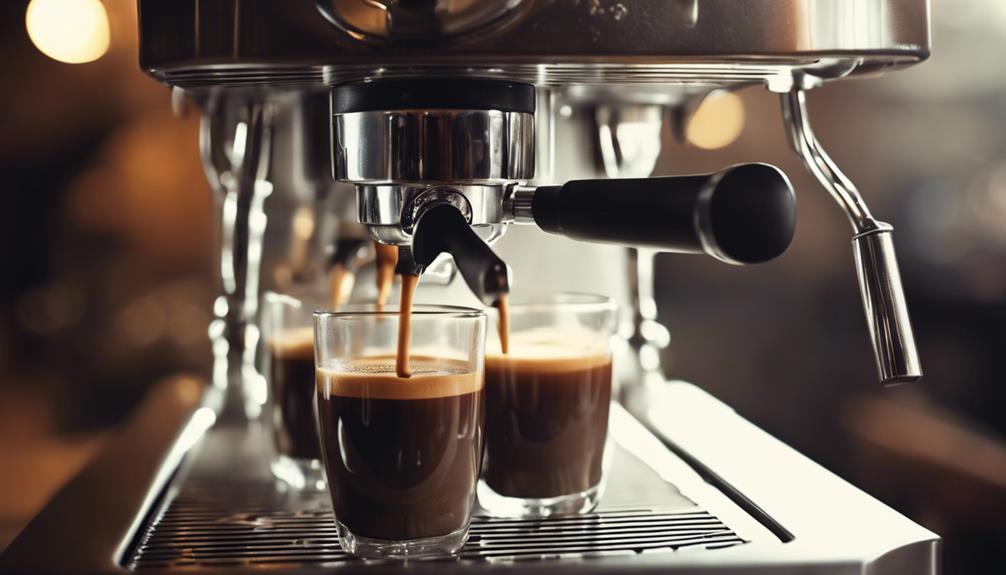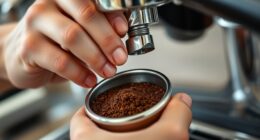You are just one grinding session away from achieving the perfect espresso shot! To bring out the full flavor potential of your espresso, it is crucial to grind your coffee beans to the perfect size. Consistency is key, so consider investing in a high-quality burr grinder that can produce a fine to medium-fine grind. Use the pinch test to check that your grind is not too powdery or lumpy, and make adjustments as necessary. Aim for an extraction time of 20-30 seconds, so keep an eye on your shot timing and adjust your grind size accordingly. Now that you have mastered the basics, get ready to elevate your espresso game to the next level with some expert techniques and tips!
Key Takeaways
- Consistent grind size is crucial for peak espresso extraction, and a burr grinder is essential for achieving this consistency.
- Aim for a fine to medium-fine grind, as small variations affect flavor, and monitor extraction time to adjust accordingly.
- The pinch test provides feedback on grind consistency and clumping, with the ideal grind feeling slightly gritty, not powdery.
- Regular maintenance of the burr grinder, including cleaning and replacing burrs, ensures consistent grind size and flavor quality.
Importance of Burr Grinders
When it comes to pulling the perfect shot of espresso, your grinder is the unsung hero that sets the stage for success. Opting for a burr grinder is the first essential step towards achieving a consistently exceptional cup.
By choosing a burr grinder, you're ensuring a consistent grind size, which is vital for ideal espresso extraction. This means you'll avoid issues like over or under-extraction caused by uneven particle sizes.
Unlike blade grinders, burr grinders minimize clumping and maintain the temperature of the coffee beans during the grinding process. With a good quality burr grinder, you can adjust the grind size to achieve the ideal setting for your espresso, often recommended at four or five for Baratza models.
Investing in a quality burr grinder is more important than purchasing an expensive espresso machine, as the grinder greatly impacts the flavor and quality of the final brew. By doing so, you'll be well on your way to brewing consistently exceptional cups of espresso.
Achieving Grind Consistency
As you work for the perfect grind, you'll need to master the art of achieving consistency.
You'll want to pay attention to the results of the pinch test, which will give you valuable insights into the quality of your grind.
Pinch Test Results
You get instant feedback on your grind consistency by performing the pinch test, which helps you identify whether your ground coffee is clumping together or falling apart. By squeezing a small amount of ground coffee between your fingers, you can determine if the grind is too fine or too coarse.
If it clumps, your grind is too fine, while loose particles indicate a coarser grind. The ideal grind for espresso should feel slightly gritty and not powdery, which you can assess through the pinch test.
Consistent grind size is essential for peak espresso extraction, and using the pinch test can help identify clumping, which negatively impacts flavor. By adjusting your grind size based on pinch test results, you can prevent common issues like under-extraction (sour flavors) or over-extraction (bitter flavors).
Regularly performing the pinch test can also aid in calibrating your grinder, ensuring that you achieve the desired consistency for various coffee beans and roast levels.
Grind Adjustment Techniques
To achieve grind consistency, master a few key techniques that help you dial in the perfect grind size and distribution for ideal espresso extraction.
You'll want to aim for a fine to medium-fine grind, as even small variations can considerably impact flavor and extraction time. To confirm you're on track, monitor your extraction time, which should fall between 20-30 seconds for a double shot. If it's off, adjust your grind size accordingly.
Next, check for clumping using the pinch test. If you notice clumps, it may indicate uneven extraction, so adjust your grind size or distribution techniques.
Speaking of distribution, try the Weiss Distribution Technique (WDT) to combat channeling and guarantee even grinds in the portafilter before tamping.
Common Grinding Problems
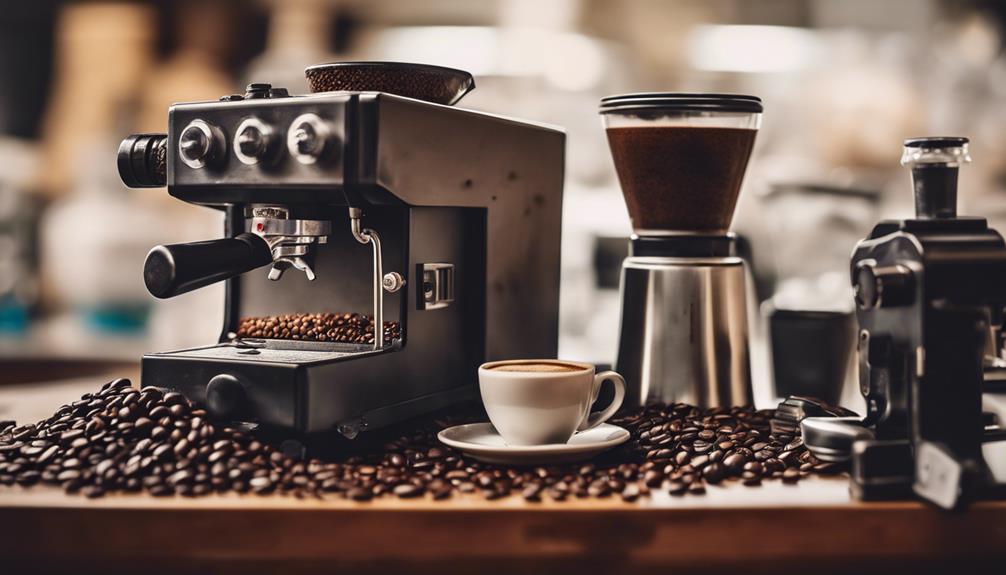
During the pursuit of the perfect grind, common issues can arise that sabotage your espresso's flavor, including channeling, clumping, and inconsistent extraction. You might be wondering what's going wrong.
One major culprit is an inconsistent grind size, which can lead to uneven extraction and flavor. Clumping in the coffee grounds can also cause uneven extraction, but you can combat this by using the Weiss Distribution Technique (WDT) to break up clumps for better distribution in the portafilter.
Furthermore, getting the grind size just right is vital – a grind that's too fine can lead to over-extraction and bitter flavors, while a grind that's too coarse can result in under-extraction and sour flavors.
To avoid these issues, make adjustments to your grind size based on extraction time feedback, aiming for an ideal espresso extraction time of 20-30 seconds.
Cleaning and Maintaining Equipment
Regular cleaning and maintenance of your equipment is essential to guaranteeing ideal flavor and performance in your espresso, as residual coffee oils and grounds can greatly impact the taste of your fresh brew.
To keep your burr grinder in top shape, clean it every 2-4 weeks to prevent stale coffee oils and grounds from affecting the flavor of your fresh coffee. Use a brush designed for coffee grinders to remove any retained grinds, and consider flushing the grinder with a small amount of rice or cleaning beans every few months for thorough maintenance.
Don't forget to replace the burrs in your grinder after grinding approximately 400-600 pounds of coffee, as worn burrs can lead to uneven grind sizes and negatively impact espresso quality.
Additionally, guarantee that all brewing equipment, including espresso machines and portafilters, are cleaned regularly to prevent coffee residue and oils from building up, which can alter the taste of your espresso.
Coffee Bean Selection Essentials
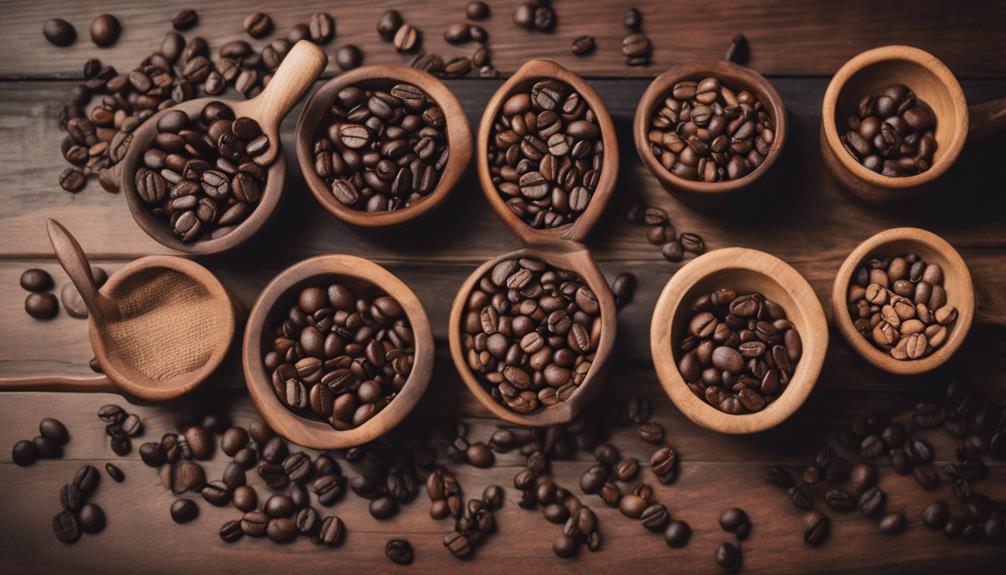
Selecting the right coffee beans is vital to achieving a balanced flavor in your espresso, as the quality of the beans directly impacts the final taste.
You'll want to opt for high-quality beans that are freshly roasted, as they'll provide the best flavor and aroma. Dark roast beans are often preferred for espresso, as they offer a rich flavor profile with low acidity. When choosing beans, consider the origin, as it can greatly influence the flavor characteristics. Latin American beans tend to be mild, while African beans offer floral and fruity notes.
When you've selected your beans, be certain to use the right amount – typically 18-20 grams for a double shot. This will guarantee ideal flavor extraction during the brewing process.
A good grinder is also important, as it'll allow you to adjust the grind setting to suit your espresso machine. With the right beans and grinder, you'll be able to experiment with different coffee brewing methods to find your perfect cup.
Essential Equipment for Espresso
With your high-quality coffee beans in hand, you'll need to invest in the right equipment to bring out their full flavor potential.
A high-quality burr grinder is fundamental for achieving a consistent grind size, which is critical for ideal espresso extraction and flavor balance. You'll also need coffee scales to measure the perfect dose for your espresso shots – typically 18-20 grams of coffee for a double shot. A tamper is essential for achieving even compression of the coffee bed in the portafilter, ensuring uniform extraction during the brewing process.
To get the perfect grind for espresso, freshly ground coffee is a must, and a burr grinder will help you achieve the perfect grind every time. If you’re someone who enjoys visiting trendy coffee spots, you’ve probably noticed that they always use freshly ground coffee for their espresso drinks. The use of a burr grinder ensures that the coffee beans are ground to a consistent size, which is essential for achieving the perfect extraction and flavor in your espresso. So, if you want to recreate that same quality coffee at home, investing in a burr grinder is a must. When it comes to making the best espresso at home, the quality of the grind can make all the difference. Using a burr grinder ensures that the coffee beans are ground to a consistent size, which is essential for extracting the full flavor and aroma of the coffee. In fact, in a starbucks espresso drink ranking, the quality of the grind is often cited as a crucial factor in the taste and overall experience of the espresso. So, if you’re looking to elevate your at-home espresso game, investing in a burr grinder is definitely worth considering.
Regular maintenance and cleaning of your equipment, including the burr grinder and espresso machine, are also fundamental to prevent stale flavors and uphold brewing quality.
Grind Size and Flavor Profile
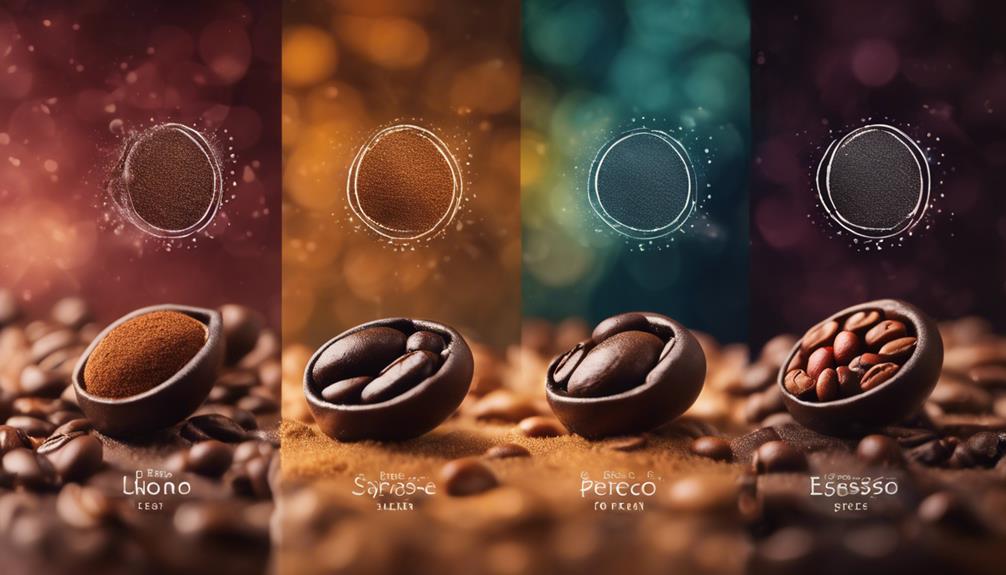
As you experiment with grind size, you'll notice that finding the ideal balance is key to releasing the perfect flavor profile.
If you're using too coarse a grind, you'll end up with sour flavors, while too fine a grind will result in bitterness.
Optimal Grind Size
You'll find that the ideal grind size for espresso falls within the fine to medium-fine range, allowing for optimal flavor extraction within the 20-30 second brew window. This sweet spot guarantees that your espresso has a balanced flavor profile, avoiding the bitter notes of over-extraction and the sour taste of under-extraction.
To achieve this optimal grind size, it's vital to use a high-quality burr coffee grinder, which minimizes fines and guarantees even particle distribution. This results in a consistent grind size, important for a balanced flavor profile.
Here are some key points to keep in mind when aiming for the optimal grind size:
- A grind that's too coarse can lead to under-extraction, while one that's too fine may cause over-extraction.
- Measure 18-20 grams of coffee for a double shot of espresso and adjust the grind size based on taste.
Grind Size Adjustments
Since achieving the ideal grind size is just the starting point, you'll need to fine-tune your grind to accommodate various factors that impact the flavor profile of your espresso. A medium-fine grind is a good starting point, but you may need to adjust it based on the roast type, bean freshness, and your personal taste preferences.
| Roast Type | Grind Size Adjustment | Flavor Profile Impact |
|---|---|---|
| Lighter Roasts | Finer Grind | Avoids sourness, enhances brightness |
| Darker Roasts | Coarser Grind | Reduces bitterness, adds depth |
| Fresh Beans | Finer Grind | Highlights nuanced flavors, increases brightness |
| Older Beans | Coarser Grind | Balances out staleness, adds body |
| Personal Taste | Adjust to Taste | Customizes flavor profile to your liking |
Flavor Profile Impact
Your grind size considerably influences the flavor profile of your espresso, with even slight adjustments capable of transforming the taste from bitter to balanced. A fine grind can lead to a faster extraction process, resulting in a more intense flavor, but it can also lead to bitterness if over-extracted. On the other hand, a coarser grind can result in under-extraction and sour notes.
To achieve the perfect flavor profile, you need to find the ideal grind size for your coffee grounds. Here are some key factors to evaluate:
- Roast level: Darker roasts perform better with finer grinds, while lighter roasts may require a slightly coarser grind to avoid sourness.
- Extraction time: Aim for an extraction time of 20-30 seconds, which is ideal for a fine to medium-fine grind.
Freshness and Storage Matters
When it comes to brewing exceptional espresso, two weeks is the maximum timeframe to use freshly roasted coffee beans before their flavor and aroma start to degrade. Beyond that, you'll notice a significant decline in ideal flavor and aroma. This means you should always check the roast dates on your coffee packaging to verify you're getting beans at their peak freshness, ideally within a month post-roasting.
To maintain that freshness, it's essential to store your coffee beans in airtight containers, protecting them from light, moisture, and air that can accelerate degradation.
You'll want to grind your beans just before brewing to maximize freshness. The texture should feel slightly gritty rather than powdery, indicating readiness for espresso extraction.
Brewing Techniques and Tips
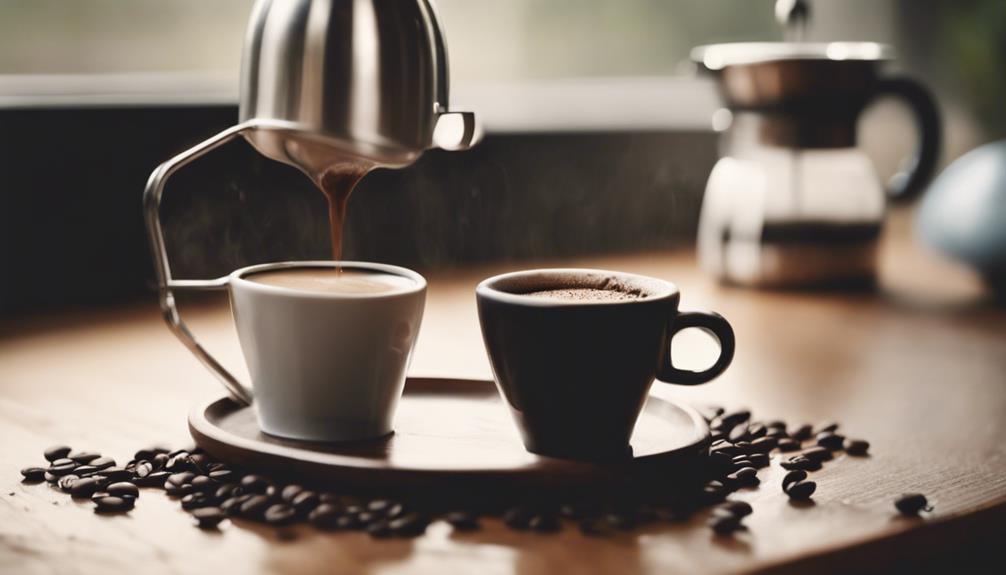
To achieve the perfect shot, you'll need to master a few key brewing techniques that will elevate your espresso game.
First and foremost, it's crucial to dial in the ideal grind size, which should be fine to medium-fine for best extraction. This will guarantee a brewing time of 20-30 seconds, preventing under and over-extraction. Consistency is key, so invest in a high-quality burr grinder to minimize fines and guarantee even particle distribution.
Here are a few additional tips to take your espresso brewing to the next level:
- Employ the Weiss Distribution Technique (WDT) to avoid channeling issues and guarantee even distribution of coffee grounds in the portafilter before tamping.
- Start with a dose of 18-20 grams of coffee and adjust the grind size based on taste preferences, noting that coarser grinds can lead to bitterness while finer grinds may result in sourness.
Frequently Asked Questions
How to Get the Right Grind for Espresso?
You're wondering how to get the right grind for espresso? Start by aiming for a fine to medium-fine grind, then adjust based on flavor profile, and remember to calibrate your grinder regularly for best results.
What Is the Perfect Grind Size for Espresso Machine?
You're looking for the ideal grind size for your espresso machine. It's crucial to aim for a fine to medium-fine grind, which allows for optimal extraction and prevents powdery or uneven grinds that can ruin the flavor.
How to Tell if Espresso Grind Is Too Fine?
As you carefully craft your shot, you wonder if your grind is too fine, like sand slipping through an hourglass. Check for clumping, uneven streams, or bitter flavors – these signs will tell you if your grind is too fine.
What Is the Ideal Espresso Grind Time?
You're aiming for an ideal espresso grind time of 20-30 seconds, allowing for perfect extraction of flavors and aromas. During this time, guarantee a fine to medium-fine grind size for best results.
Conclusion
You've reached the finishing line! With the perfect grind in your hands, you're now the master of your espresso domain.
Your taste buds are doing the tango, and your coffee game is on point. Remember, the key to revealing the ultimate espresso experience is consistency, so keep those grinds fresh and that equipment sparkling.
As you savor each cup, remember that practice makes perfect, and with time, you'll be brewing like a pro, weaving a rich tapestry of flavors that will leave you and your guests spellbound.
